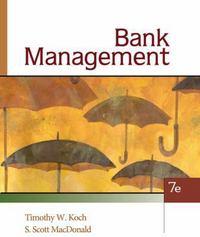Question
1. Using supply and demand analysis, which of the following is true? A. The burden of a tax on production cannot be determined on the
1. Using supply and demand analysis, which of the following is true?
A. The burden of a tax on production cannot be determined on the basis of who actually pays the tax.
B. The burden of a tax on production is always split evenly between consumers and sellers.
C. Consumers bear the entire burden of a per-unit tax on production.
D. Sellers bear the entire burden of a per-unit tax on production.
2. If the income elasticity for a particular good is 0.8, we would expect to see more of that good:
A. d and e.
B. consumed in wealthier countries.
C. on supermarket shelves.
D. consumed in poorer countries.
E. consumed in low-income communities.
3. If total utility is falling, marginal utility is:
A. positive.
B. negative
C. positive, but declining.
D. either positive or negative.
E. zero.
4. A perfectly competitive firm's short-run supply curve is the:
A. average total cost curve.
B. demand curve above the marginal revenue curve.
C. same as the market supply curve.
D. marginal cost curve above the average variable cost curve.
5. Perfect competition is a market structure in which there is:
A. a contest among firms to provide good service after the sale.
B. competition in product quality.
C. rivalry in product design.
D. none of these.
6. If milk used to be produced in a monopoly market, and now the milk market has become a perfectly competitive market, we can expect:
A. less milk to be sold at a higher price.
B. more milk to be sold at a higher price.
C. less milk to be sold at a lower price.
D. more milk to be sold at a lower price.
E. the same amount of milk to be sold at the same price.
7. Assume a monopolist charges a price corresponding to the intersection of the marginal cost and marginal revenue curves. If this price is between its average variable cost and average total cost curves, the firm will:
A. earn an economic profit.
B. continue to operate in the long run
C. shut down and exit the industry.
D. continue to operate in the short run.
8. Which of the following isnota characteristic of the monopolistic competition market structure?
A. Many sellers, each small in size relative to the overall market.
B. Few sellers.
C. Differentiated product.
D. Easy, low-cost entry and exit.
Step by Step Solution
There are 3 Steps involved in it
Step: 1

Get Instant Access to Expert-Tailored Solutions
See step-by-step solutions with expert insights and AI powered tools for academic success
Step: 2

Step: 3

Ace Your Homework with AI
Get the answers you need in no time with our AI-driven, step-by-step assistance
Get Started


